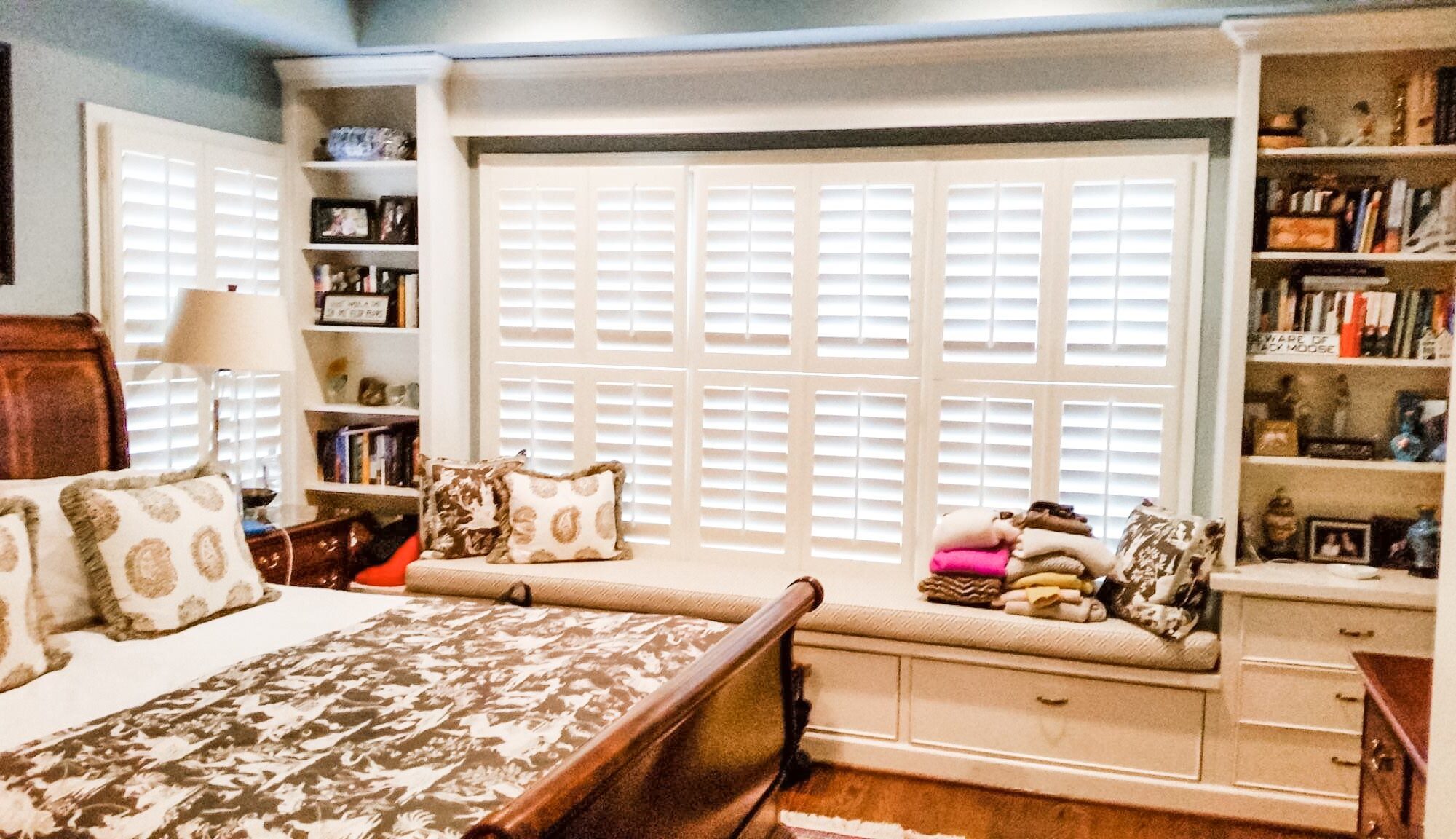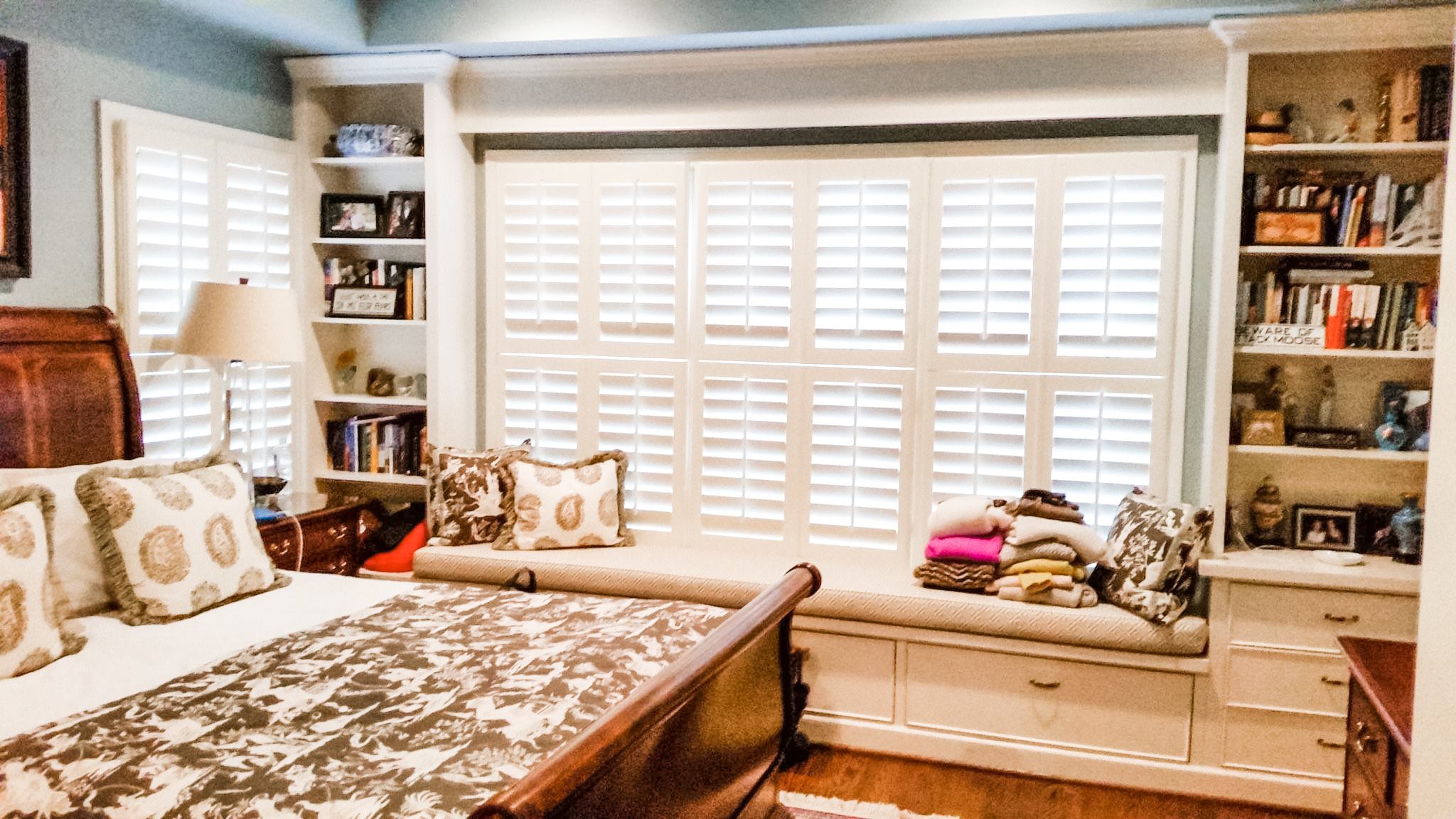
When you move into a new house, it feels as though every step you take shows a new choice to make. What color do you want for the walls? How do you want to arrange your furniture? What kind of kitchen countertops do you want? It’s part of the fun of making a home your own, putting your own stamp on it. And this applies to your window treatments, as well.
You have a number of options: blinds, curtains, shades, and of course, plantation shutters. But what’s the right choice for your home? Let’s go over some of the things to consider when choosing your window treatments.
Types of Window Treatments
Before we discuss things to consider when searching for window treatments, let’s talk about the different window treatments available to you. Here are the different types of window treatments that you’re likely to find:
- Blinds – Blinds are a budget friendly option typically. They attach to the top of the window frame with a cord that’s used to lift them up and draw them down. Blinds can be made in a number of materials, including plastic, aluminium, and vinyl. A tilt rod is used to adjust the louvers.
- Curtains – Curtains are attached near the top of the window frame with a curtain rod and drop to the window sill or lower. They are easy to operate, simply being pushed from one side to the other, but also very all-or-nothing, as there’s no way to let in filtered sunlight.
- Drapes – Drapes are exactly like curtains, but typically reach to the floor for more dramatic effect.
- Shades – Shades are somewhere in between the two. Shades are made with fabric, but they’re lifted and lowered through use of a cord. Some are rolled at the top, while others are bunched.
- Shutters – Plantation shutters are wooden and open and close like doors, though they come in a number of styles and varieties. Like blinds, they include a tilt rod that allows you to customize the tilt of the louvers, letting in as much or as little filtered sunlight as you’d like.
With all that established, here are a few considerations that will help you choose your window treatments.
Function and Operation
Of all of the window treatments available, they seem to all have different functions. Blinds are operated by a string cord and a tilt wand. Pull the cord down to lift the blinds, and pull it to the side to lower them again. The tilt wand determines whether the blinds are open or closed. Curtains on the other hand are pushed from side to side, but don’t offer the filtered appearance of blinds or plantation shutters. Plantation shutters stay in place, fitting within the frame of your windows, but are opened or closed with a tilt wand, or can be opened like a door.
Style
The window treatments you choose for your home will also impact the style of the room. Blinds, while affordable, are often the least attractive, and can become tangled or uneven. Curtains make an elegant statement, if the material is right. Curtains with deep colors or intricate patterns can look stately and classic, while white sheer curtains will look more airy and modern.
Plantation shutters excel here because there are a variety of shutter styles to choose from. The traditional plantation style appearance is perfect for a more classic looking house. If you want something more modern, you might opt for our patented Softedge shutters, encased completely within the frame of the window. There are also cafe shutters, which cover only half of the window, for a quirky or rustic appearance that is quite literally in the middle. We offer plantation shutters in both stained wood or cream painted shutters.
Architecture and Design
This has more to do with the style of the room, as well as the architectural function of the space. In some cases, you may not be able to install a rod that goes along the wall above the window. This may be the case with slanted walls and ceilings, for instance. In these cases, you’ll want to rule out curtains and go for something more like blinds or shutters. Softedge shutters work particularly well in this case as they’re designed to fit perfectly within the window frame, for a sleek and subtle appearance.
Lighting
One of the most important considerations when it comes to anything to do with your window is lighting. After all, that’s the reason your window exists in the room. Curtains, drapes, and shades have a very all-or-nothing element to the light allowed in through the window. When closed, they allow very little light to filter through. When open, light floods in unobscured. But there’s really no middle ground. Some of these window treatments might have sheer fabrics that are designed to let in filtered light when closed. However, this fails to allow for completely shutting out outside light when needed, as with blinds or plantation shutters.
Cost
When you think of the cost of the window treatments you choose, keep in mind the long-term cost and energy efficiency as well as immediate cost. For instance, plastic or vinyl blinds may be cheap but they are often easy to break and need to be replaced. Plantation shutters may be more expensive, as they are more expensive to make, but they’re made to last and thus the long-term cost is much lower. Plantation shutters are also much more energy efficient, offering a sturdy wooden barrier to help seal heat in during the winter.
Ultimately, there’s a reason that our customers keep coming back for plantation shutters when it comes to window treatments. Not only are they beautiful, but they’re durable, energy efficient, and able to fit within just about any design or function. But why not see for yourself? On any weekday, visit our showroom/woodshop in Richmond, Virginia where all of our shutters are made, stained, and painted. Want to learn more? Contact Shenandoah Shutters today for more information or to order your plantation shutters.

